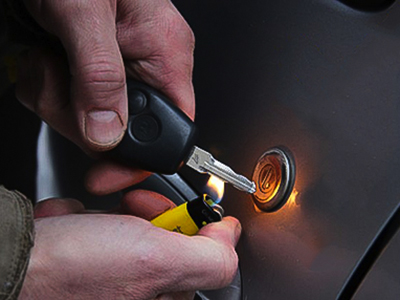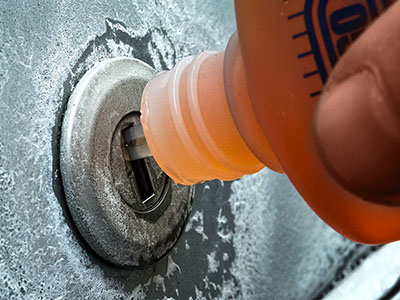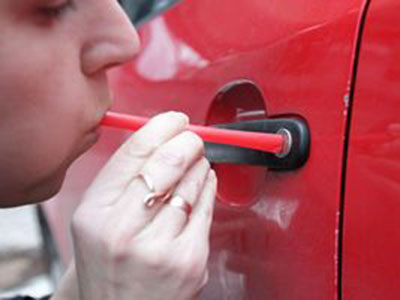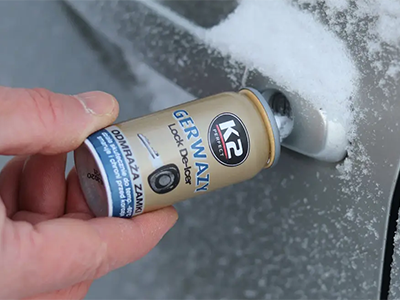Problems with locks are familiar to almost every car owner. Troubles often arise due to severe frost, which can damage not only the lock but also the battery. Difficulties can also appear due to increased humidity, which causes the system to ice over even with a slight temperature drop. A lock can also freeze after rain or a car wash when the weather outside is cold. Don’t be upset if the door won’t open. Use the tips and recommendations below, which have been tested by many car owners through personal experience.
Keep in mind that the most challenging situation is when the central locking system freezes. This applies to cars that still use a key for entry. The assumption is that all doors only unlock after the central system is disengaged. And if it doesn’t respond to the owner’s actions, access to the car’s interior will be completely blocked.
Method No. 1. Open Flame Can Help
Often, car owners faced with a frozen lock decide to solve the problem using handy means, such as a lighter. This solution has valid reasoning. Using a match or lighter, you can heat the key. Then, the heated key should be inserted into the keyhole and gently turned in different directions with smooth movements. If the problem is indeed a frozen lock, this method should resolve it.
Warm the car key very carefully to avoid melting any plastic parts. The turning motions should also be soft and smooth. Otherwise, the heated key could break. A lighter can be used not only to heat the key but also the lock itself. However, this is a rather dangerous method, so it is recommended only as an absolute last resort.

Method No. 2. Lubricate the Lock
Use special products designed for winter operation. It’s best if you buy such a product in advance. Store it not in the glove compartment but on your person. A silicone lubricant can help open the door if the rubber seals are frozen. Apply the lubricant into the keyhole using the dispenser. As an alternative, you can use windshield washer fluid. However, washer fluid often contains aggressive components, so caution is advised. If specialized lubricants or washer fluids are unavailable, you can try treating the lock with an alcohol-based solution, which can dissolve the ice.
If the problem is not a frozen lock but iced-up seals, remember one important rule: push the door forward, not toward yourself. Only this motion can break up the ice that has formed.

Additional Methods
Let’s look at three more options that are also suitable for solving the problem:
- Liquid Key. This aerosol spray is specially designed for defrosting locks.
- Drinking Straw. Insert an ordinary drinking straw into the keyhole and breathe through it. The straw will act as a conductor for your warm breath and help thaw the lock.
- Heating Pad. You can make a heating pad yourself by using a bottle filled with warm water. Hold it against the lock area until it thaws. Important: Do not pour hot water directly into the lock. This can damage the electrical wiring and cause metal corrosion.


If none of the listed methods helped, tow the car to a heated garage.
How to prevent the lock from freezing?
To prevent problems related to a frozen lock, pay attention to the following recommendations:
- Dry the car in a warm garage or unit after rain.
- Treat the seals with a special water-repellent agent after washing.
- Leave a few newspapers inside the cabin (they will absorb moisture and prevent the doors from freezing).
An alternative way is to seek help from experienced professionals.
Advantages of cooperating with professionals
Locksmiths specializing in lock opening will help quickly resolve issues with both jammed and frozen mechanisms. Specialists have a wide arsenal of tools and means to open doors without harming the locks. By seeking professional help, you can avoid serious breakdowns that often occur due to attempts to open the mechanism yourself using improvised means.
